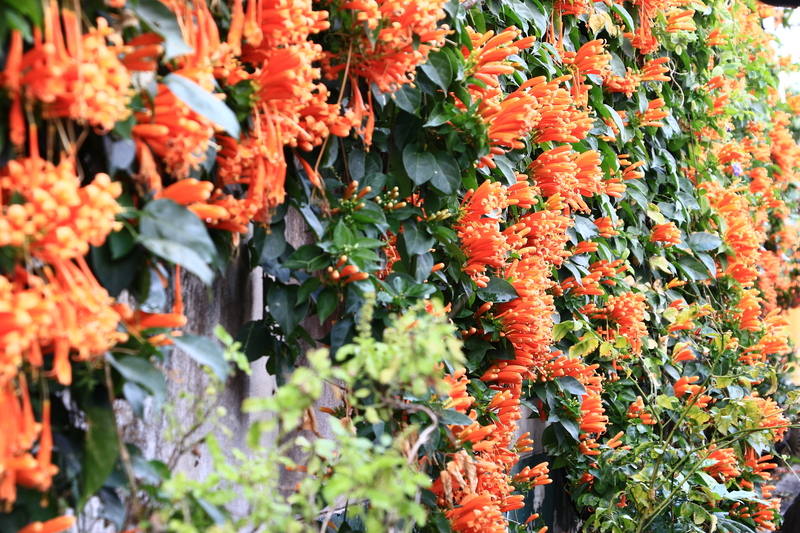Reducing your carbon footprint: One garden at a time
Posted on 18/06/2025
Reducing Your Carbon Footprint: One Garden at a Time
Climate change and sustainability are among the most critical challenges facing humanity today. As individuals, it can be easy to feel powerless, but the choices we make in our own backyards can have a profound impact on the world's future. In this in-depth guide, we'll explore how reducing your carbon footprint one garden at a time isn't just possible -- it's vital, rewarding, and more accessible than you may think!
What is a Carbon Footprint and Why Should You Care?
Your carbon footprint is the total amount of greenhouse gases, particularly carbon dioxide, that your activities generate. The majority of these emissions come from:
- Transportation (driving vehicles, flying planes)
- Home energy use (electricity, heating, cooling)
- Food and product consumption (how things are grown, made, and transported)
The larger your carbon footprint, the greater your contribution to global warming and environmental degradation. Reducing your carbon footprint helps slow climate change, improves local air quality, and preserves resources for future generations.

How Gardening Helps Lower Your Carbon Emissions
You might not immediately connect working in your garden with fighting climate change, but gardening can dramatically reduce your impact on the planet. Here's how:
- Plants absorb CO?: Green plants naturally pull carbon dioxide from the air as they grow, storing it in their leaves, stems, and roots.
- Reducing waste and food miles: Growing your own vegetables and herbs means less need for store-bought produce, which often travels thousands of miles before reaching your plate.
- Improving soil health: Sustainable gardening practices build organic matter, which increases the soil's ability to store carbon over time.
- Encouraging biodiversity: Gardens support pollinators and wildlife, balance local ecosystems, and reduce the need for chemical inputs.
Each step you take in your own garden counts towards a healthier, greener planet.
10 Practical Steps to Reduce Your Carbon Footprint Through Gardening
1. Start a Compost Pile
Organic waste in landfills decomposes anaerobically, releasing methane, a potent greenhouse gas. By composting food scraps and garden clippings, you:
- Divert waste from landfills
- Add valuable organic matter to your soil
- Reduce the need for synthetic fertilizers
2. Grow Your Own Food
The food system is a major contributor to global carbon emissions, from transporting produce to packaging it in plastic. When you grow your own fruits, vegetables, and herbs:
- You reduce the "food miles" of your meals
- You eat fresher, healthier produce
- You control what fertilizers and pesticides are used -- or not used!
3. Choose Native and Drought-Tolerant Plants
Native plants are adapted to your local climate and soil, needing less water and maintenance than exotic species. By landscaping with native and drought-tolerant plants, you:
- Reduce water consumption
- Minimize lawn mowing (and fuel emissions)
- Provide vital habitat for native pollinators and birds
4. Mulch to Save Water and Fertilizer
Mulching is a simple, yet powerful way to lower your garden's carbon footprint. Natural mulches:
- Keep soil moist, reducing irrigation needs
- Suppress weeds naturally, limiting the need for herbicides
- Break down to boost soil organic matter and carbon storage
5. Garden Organically
Synthetic pesticides and fertilizers require fossil fuels to manufacture and can contribute to greenhouse gas emissions. Organic methods focus on:
- Building fertile, living soils
- Encouraging natural predators for pests
- Using compost and plant-based fertilizers
Going organic is an excellent way to garden sustainably and cut your carbon output.
6. Switch to Manual or Electric Tools
Gas-powered mowers, trimmers, and blowers emit more air pollution per hour than most cars! Opt for manual, solar, or battery-powered tools to:
- Lower carbon emissions instantly
- Enjoy quieter, cleaner gardening
7. Collect Rainwater
Watering with a hose or sprinkler uses treated drinking water, which carries a high environmental cost. Rain barrels help you:
- Reduce your reliance on municipal water supplies
- Catch and reuse nature's rainfall
- Cultivate resilient, water-wise landscapes
8. Limit or Replace Your Lawn
Traditional lawns use energy-hungry mowers, constant irrigation, and synthetic fertilizers. Reduce your lawn's size or swap it for groundcovers, wildflowers, or edible plants to save resources and create an eco-friendly oasis.
9. Plant Trees and Shrubs Strategically
Trees are nature's air filters and climate regulators. Properly placed trees can:
- Absorb carbon dioxide over decades
- Shade your home, lowering cooling costs
- Boost biodiversity and beauty
10. Share and Educate
Finally, spread the word! Share seeds, knowledge, and inspiration with friends and neighbors. Community gardening and educational events magnify your positive impact.
Understanding the True Impact: How Much Carbon Can Your Garden Save?
While the carbon offset of one home garden may seem modest, the cumulative effect is impressive. Here's a snapshot:
- Composting one ton of organic waste saves up to 1.2 metric tons of CO? equivalent emissions per year.
- A single mature tree can absorb around 22 kg (48 lbs) of CO? annually.
- Growing vegetables at home can cut food-related emissions by hundreds of pounds per household.
Multiply these savings by millions of gardens worldwide, and you'll see how personal action adds up to global change.
Innovative Ways to Make Your Garden Even Greener
Install a Green Roof or Living Wall
If you have limited space, green roofs and living walls help insulate homes, absorb rainwater, and capture carbon -- even in cities!
Practice No-Dig Gardening
The no-dig method minimizes soil disturbance, helping soil organisms thrive and increase carbon storage underground.
Use Recycled and Sustainable Materials
From raised beds to garden furniture, choose FSC-certified wood, repurposed stone, or recycled plastics for a lower carbon footprint.
Support Local Ecosystems
Instead of exotic ornamentals, planting native wildflowers, grasses, and shrubs creates vital habitat for bees, butterflies, and birds.
Common Gardening Mistakes That Increase Your Carbon Footprint
- Using peat-based compost: Peat extraction releases huge amounts of stored carbon. Opt for peat-free products.
- Over-fertilizing: Excess chemical fertilizer produces nitrous oxide, a powerful greenhouse gas.
- Throwing away plant waste: Bagging and binning trimmings instead of composting leads to unnecessary emissions.
- Overwatering: Wasteful watering uses energy and depletes resources without benefiting plants.
Success Stories: How Real Gardens Reduced Carbon
- Urban community gardens in cities like Detroit and London have transformed empty lots into productive green spaces, sequestering carbon and producing local food.
- School gardens teach children about climate change, biodiversity, and how gardening reduces emissions -- sparking future green leaders.
- Suburban households report lowered grocery bills, fewer food miles, and less lawn maintenance after transitioning to edible landscapes.
By sharing stories and best practices, we inspire others to join the movement and make a positive difference in their own communities.

Frequently Asked Questions About Reducing Your Garden's Carbon Footprint
Does my small garden really make a difference?
Yes! Every garden offsets carbon, boosts local resilience, and inspires change -- especially when multiplied by millions of others globally.
Is organic gardening more sustainable?
Generally, organic practices use fewer resources, avoid fossil fuel-based chemicals, and build soil carbon, all reducing your climate impact.
Can gardening be eco-friendly in cities or apartments?
Absolutely. Balcony containers, rooftop gardens, and community plots all decrease urban heat, offer food, and absorb carbon dioxide.
What if I don't have space for a garden?
Consider joining a community garden, volunteering at local environmental projects, or supporting carbon-offset initiatives through donations and advocacy.
Conclusion: Grow Change, One Garden at a Time
Your garden is a powerful tool in the fight against climate change and a fun, practical way to shrink your carbon footprint. Whether you're composting, planting natives, harvesting fresh vegetables, or switching to manual tools, every action matters. Together, we can create lush, eco-friendly gardens that stabilize our climate, support local wildlife, and provide healthy, resilient spaces for generations to come.
Start today. Plant a seed, and join the movement towards a more sustainable, carbon-conscious future -- one garden at a time.
- Ready to learn more? Explore our library of sustainable gardening resources and tips!

